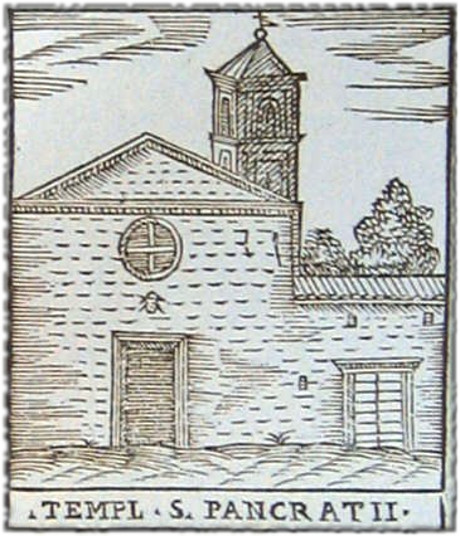Church of San Pancrazio
Introduction
The church of San Pancrazio (English: S. Pancras; Latin: S. Pancratii) is a Roman Catholic ancient basilica and titular church founded by Pope Symmachus in the 6th century in Rome, Italy. It stands in via S. Pancrazio, westward beyond the Aurelian gate that opens in a stretch of the Aurelian Wall on the Janiculum.
History
The basilica was built by Pope Symmachus (498-514), on the place where the body of the young martyr Saint Pancras of Rome, or Pancratius, had been buried, Via Aurelia miliario secundo ('on the Via Aurelia at the second milestone').
The church was originally placed by him under the care of the clergy of the Church of S. Crisogono. Due to their neglect of the site, Pope Gregory I ((590-604) handed it over to the members of the newly founded Benedictine Order after the Lombards sacked their monastery of Montecassino in 580.
In the seventh century Pope Honorius I (625-638) built a larger church for the increasing numbers of pilgrims; he placed the relics of the saint beneath the high altar, with a window of access from a semi-circular corridor that led behind and below the altar.[2]
In the Future
In the 17th century, it was given to the Discalced Carmelites, who completely remodeled it.
The church underwent further rebuilding in the 19th century, having been heavily damaged during Garibaldi's attack on Rome in 1849; but it retains its plain brick facade of the late 15th century, with the arms of Pope Innocent VIII.
Notes
Below the church there are huge catacombs, the Catacombe di S. Pancrazio or di Ottavilla. Entrance is next to the small Museo di S. Pancrazio with fragments of sculpture and pagan and early Christian inscriptions.
